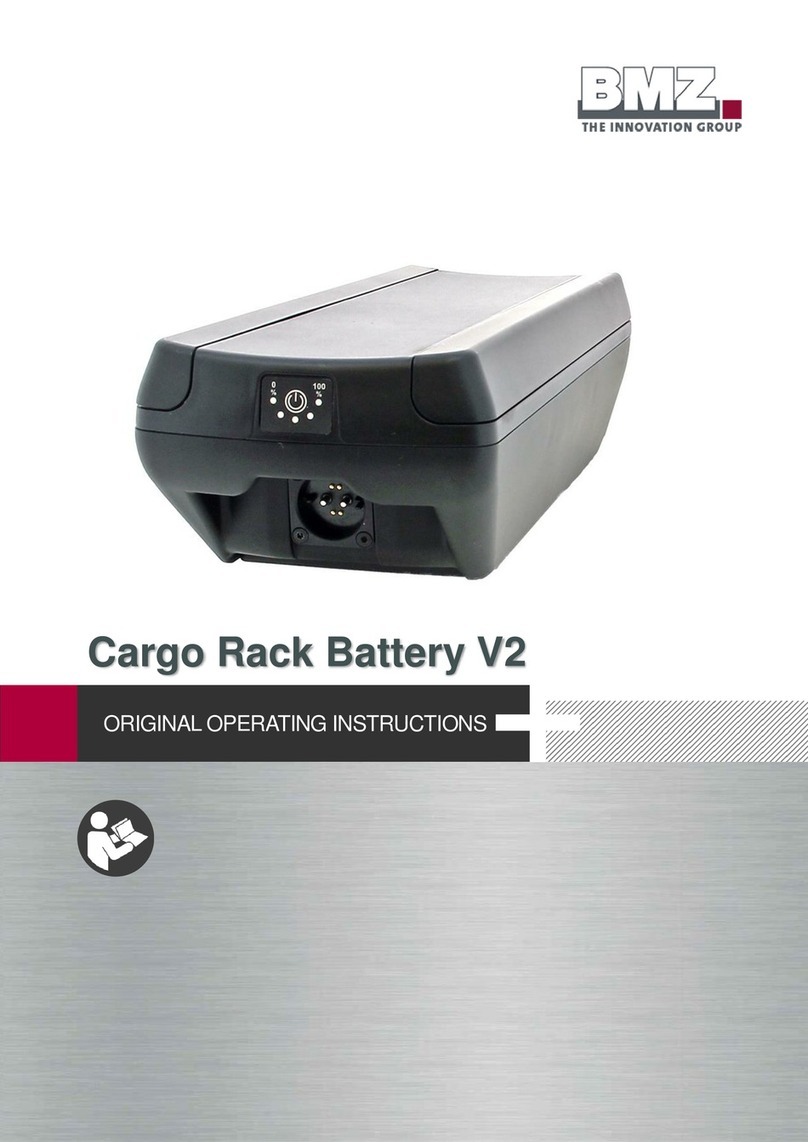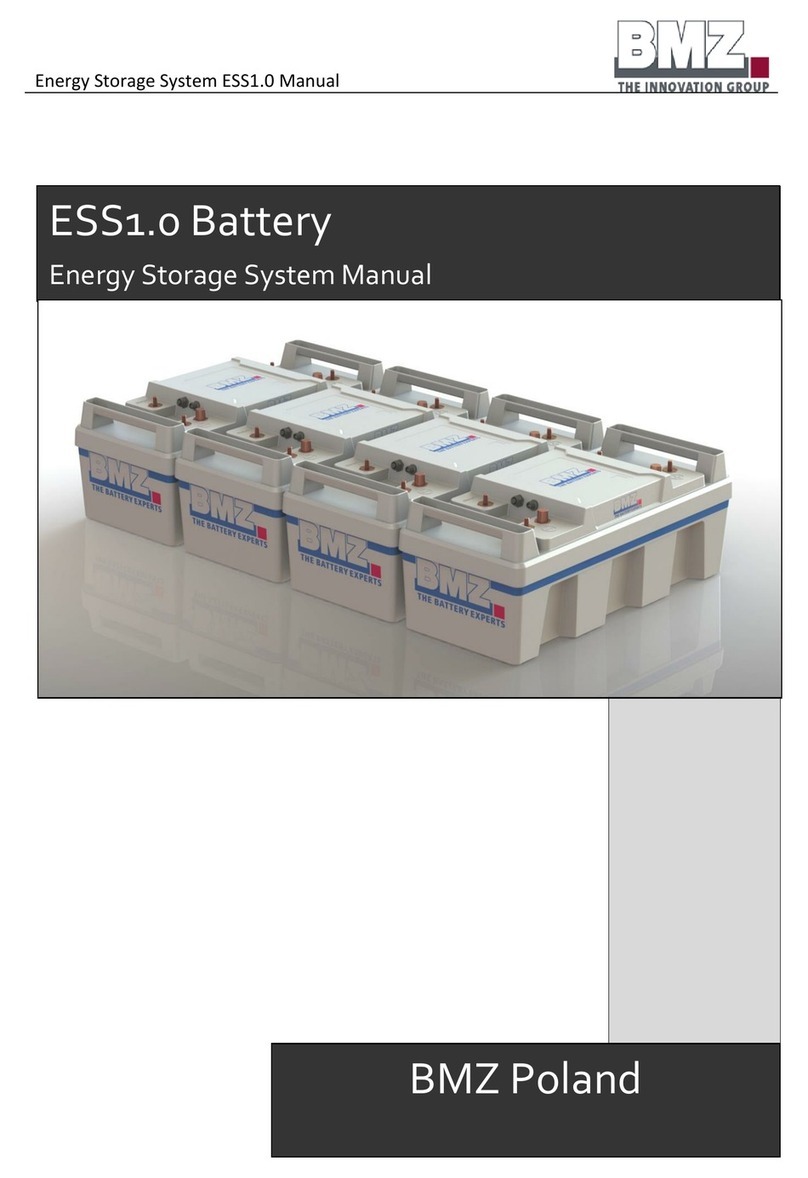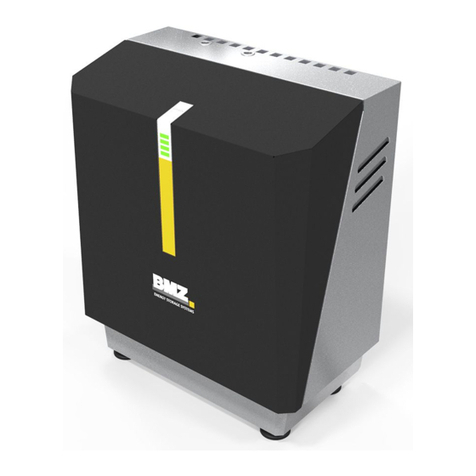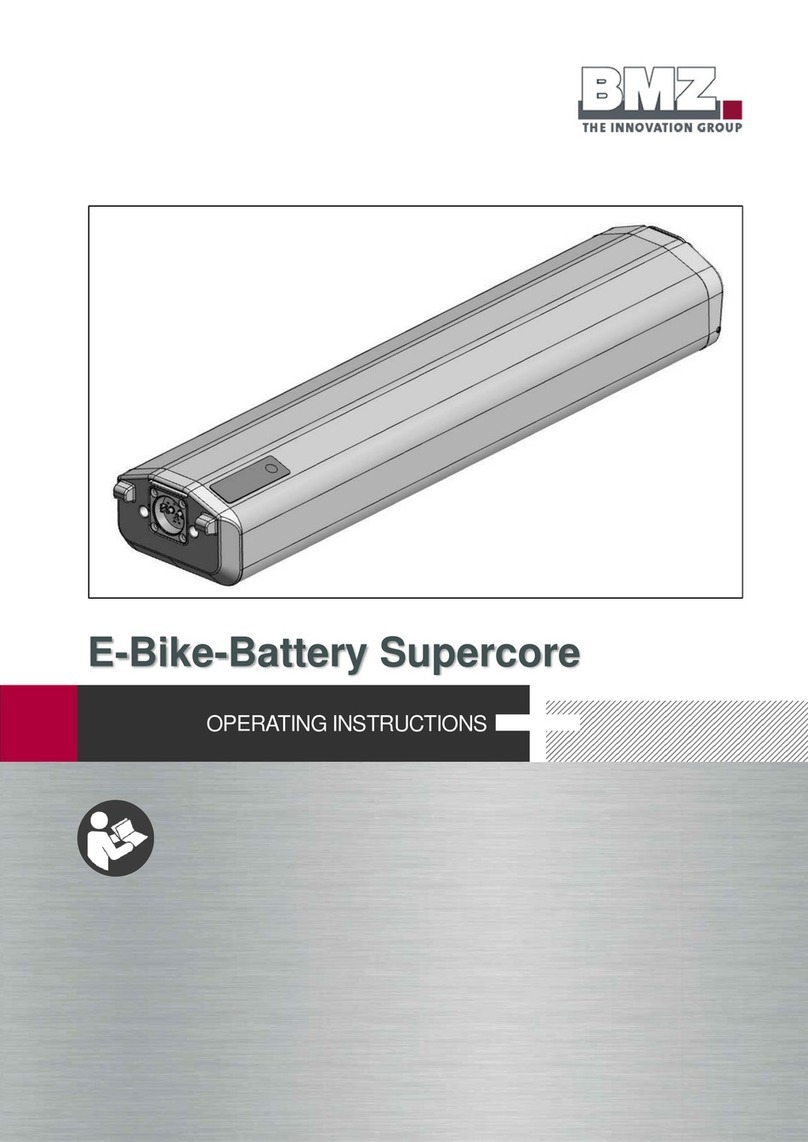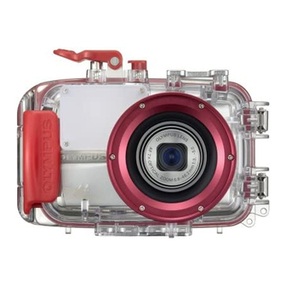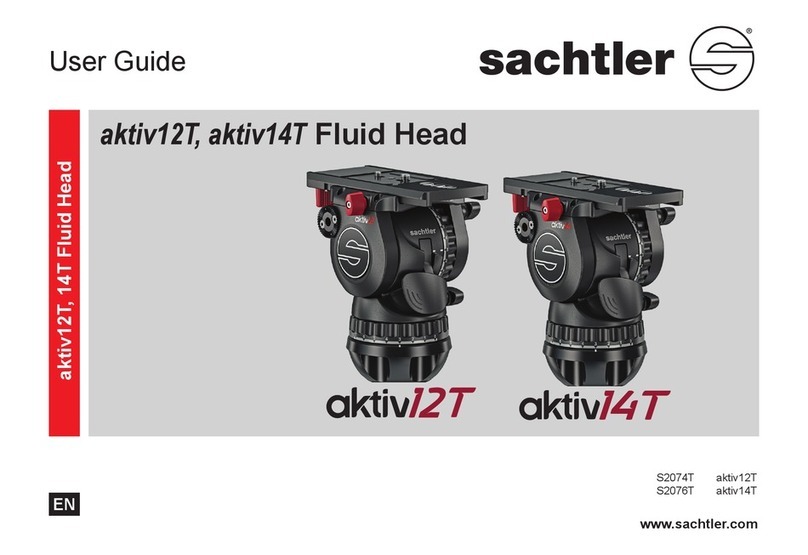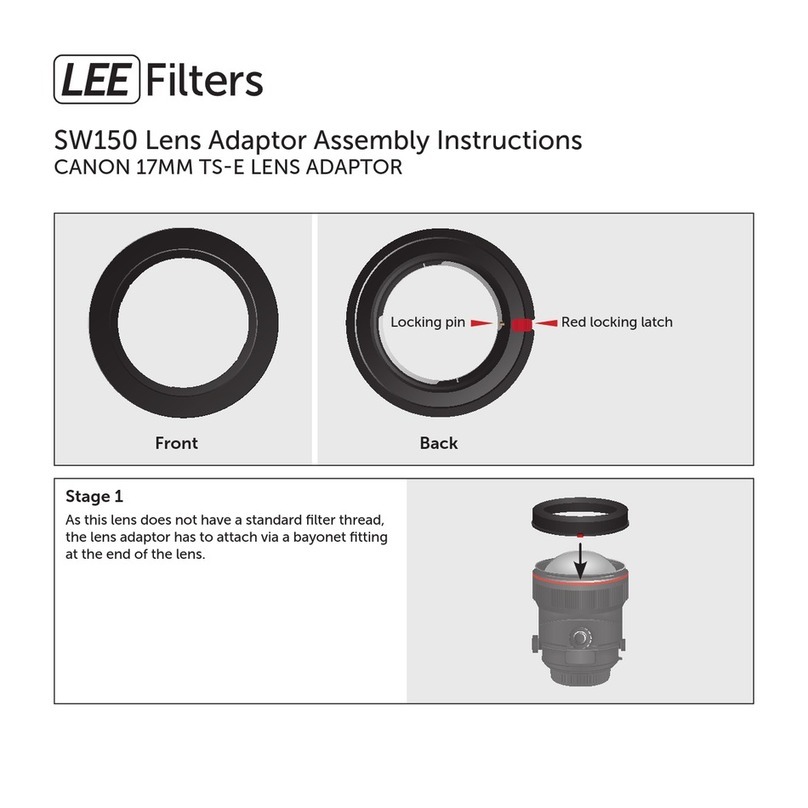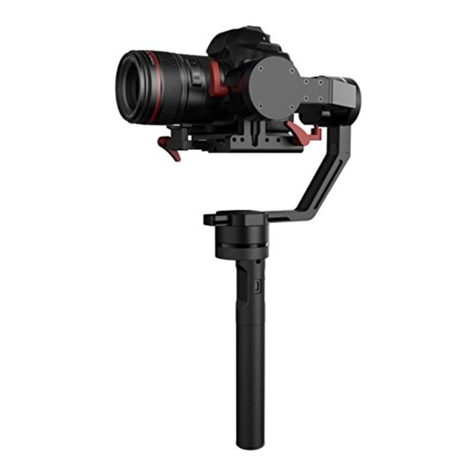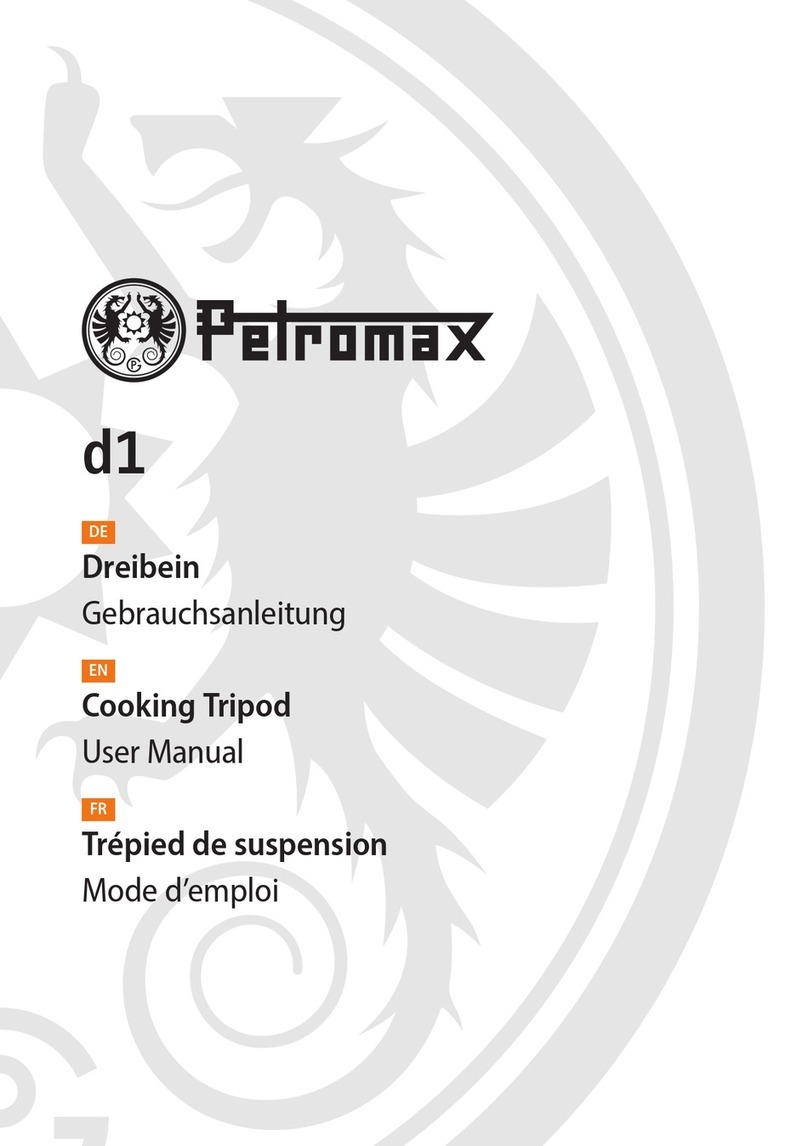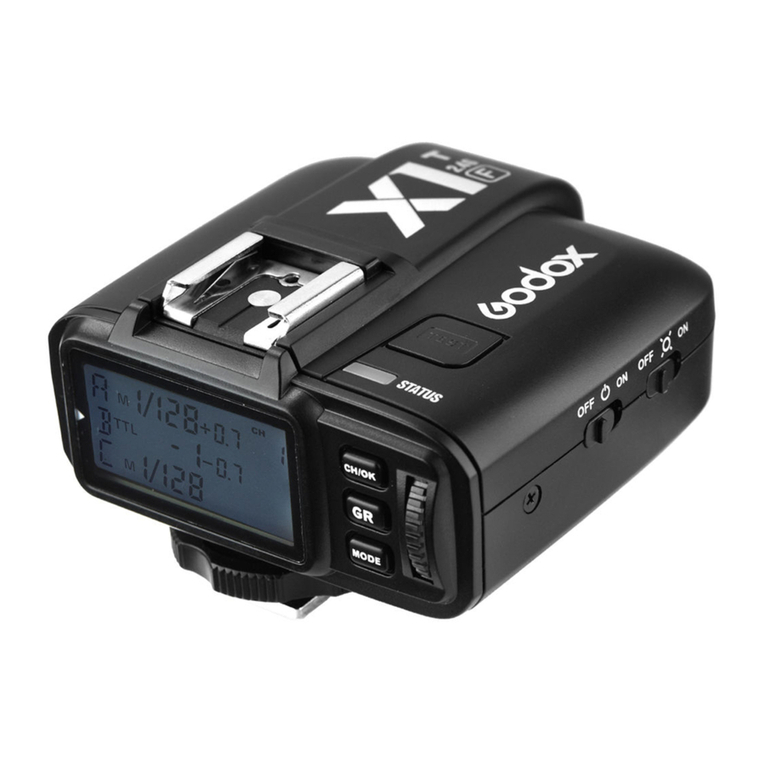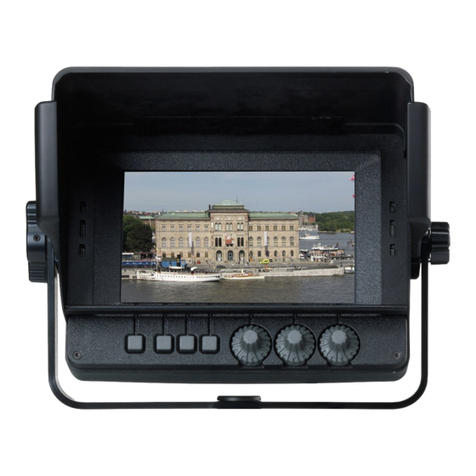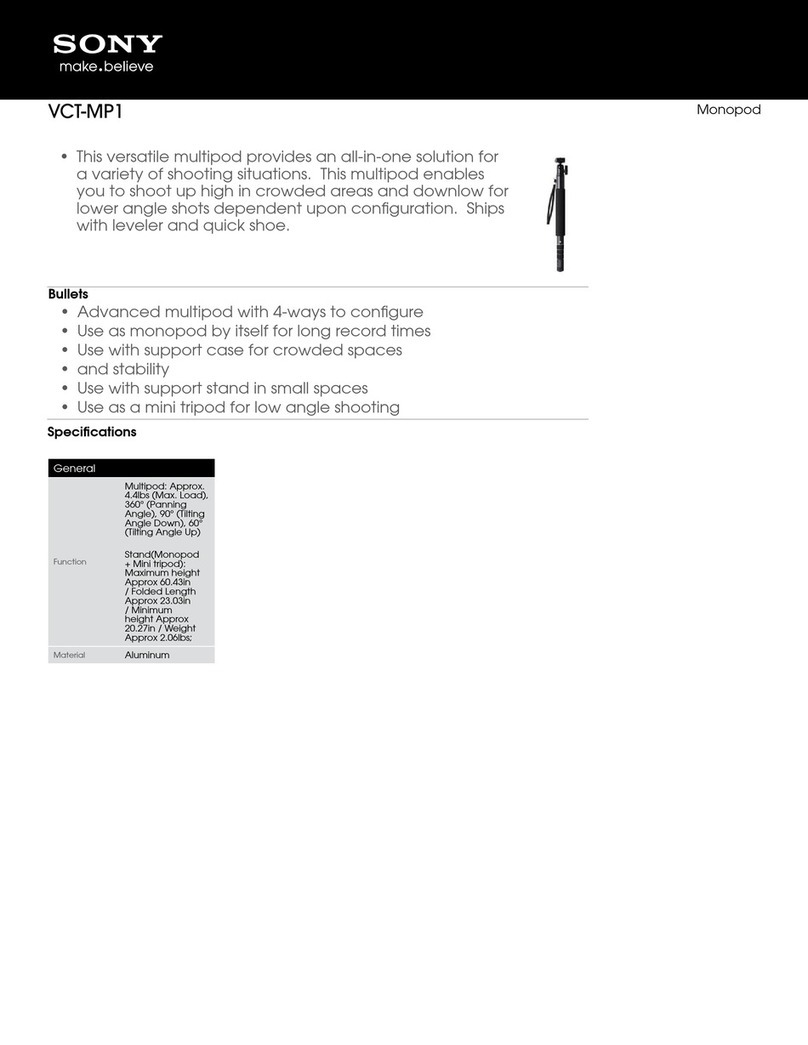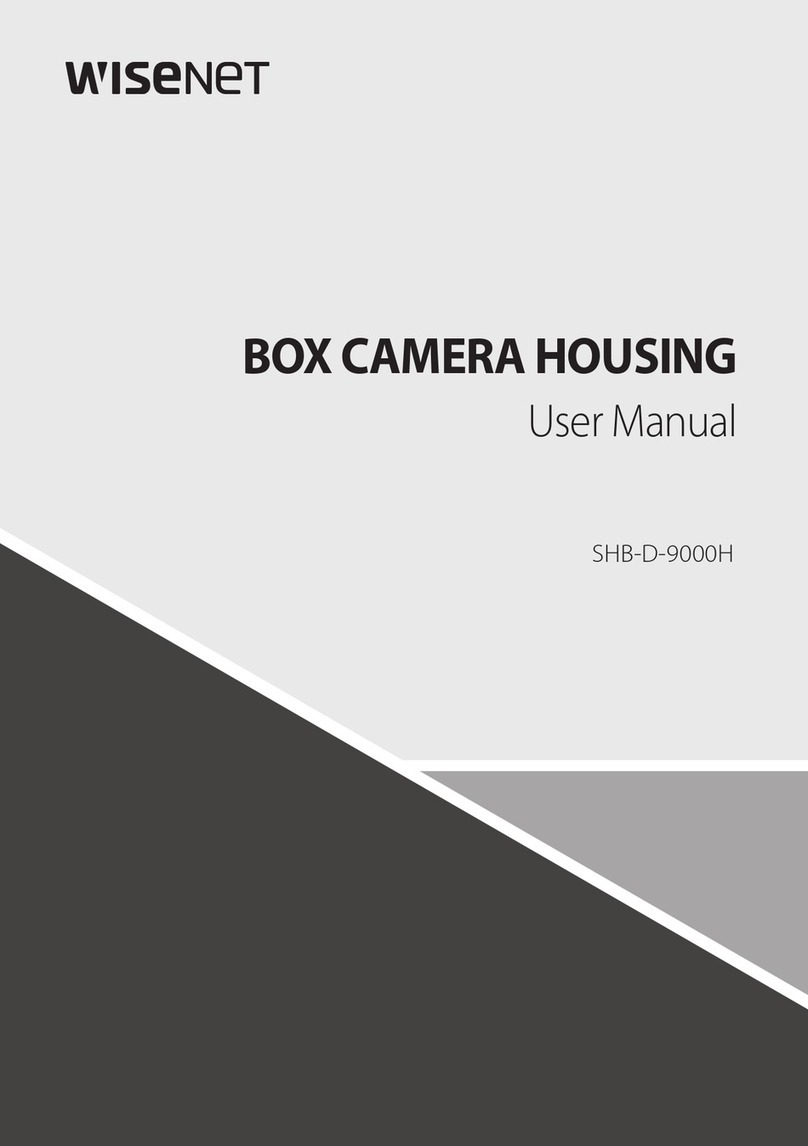BMZ ESS 7.0 User manual

OPERATING MANUAL ESS 7.0

Version 1.1
Original operating manual

Copyrights
Version 08/2016
Copyright © BMZ GmbH
Subject to technical modifications that are required for advancements.
This operating manual or parts thereof may not be reproduced in any format (photocopy, micro film or
other methods) or used, duplicated or processed with the help of electronic systems without a written
consent of BMZ GmbH. In case of violations of these regulations, we reserve the right to claim damage
compensation.
BMZ GmbH
Am Sportplatz 30
63768 Karlstein am Main
Germany
Telephone +49 (0)6188 99 56 0
Service +49 (0)6188 99 56 9830
Fax +49(0)6188 99 56 900
Website: http://www.bmz-gmbh.de
Email: ess.service@bmz-gmbh.de

About this manual
General
A qualified electrician must carry out installation, commissioning and maintenance. Please read this
operating manual carefully to ensure a fault-free operation of the BMZ ESS 7.0 battery storage system.
Please store this operating manual such that it is accessible to all persons who work on the BMZ ESS 7.0
system.
Scope
This manual is intended for all products of the BMZ ESS 7.0 series.
Differentiation between an operating company and operator
The end consumer is referred to as an operating company in this manual. The system is installed and put
into operation for this operating company.
A person, who works on the system or its controllers, is referred to as an operator in this manual. This
person must be a qualified electrician authorised by BMZ GmbH.
Liability exclusion
BMZ GmbH does not bear any liability for damage resulting from unintended usage and non-adherence to
this manual. This includes personal injuries, material damage, damage to the product as well as
consequential damage, repair damage and other handling of the product by non-qualified electricians. This
liability limitation is applicable even when non-original spare parts are used.
Carrying out arbitrary changes or technical modifications in the product is strictly prohibited.
A liability for profits lost or other costs and financial losses is ruled out.

Table of contents
About this manual ............................................................................................. 4
Table of contents............................................................................................... 5
List of figures................................................................................................... 10
1Safety ................................................................................................................... 13
1.1 Classification of warnings and intended use ....................................... 14
1.1.1 Warnings in the operating manual..........................................................................14
1.1.2 Intended use............................................................................................................15
1.2 Safety instructions to be followed......................................................... 16
1.2.1 General safety instructions .....................................................................................16
1.2.2 Safety instruction when working with the tool.......................................................18
1.2.3 Safety instructions for transport and installation ...................................................19
1.2.4 Safety instructions for operation ............................................................................21
1.2.5 Safety instructions for cleaning...............................................................................23
1.2.6 Safety instructions for maintenance and dismantling ............................................24
1.2.7 Safety instructions for battery interiors..................................................................26
1.2.8 Safety instructions for fire prevention ....................................................................28
1.2.9 Explosion protection ...............................................................................................29
1.2.10 Residual risks ...........................................................................................................29
1.3 Data and safety devices of the battery storage system....................... 30
1.3.1 General hazard instructions and pictograms ..........................................................30
1.3.2 Installed safety systems ..........................................................................................32
1.3.3 Safety checks ...........................................................................................................33
2Function, delivery scope and technical key variables.....................................34
2.1 Function .................................................................................................. 34
2.2 Delivery scope ........................................................................................ 34
2.3 System overview .................................................................................... 35

2.4 Rating plates and warning stickers....................................................... 39
2.5 Technical key variables.......................................................................... 42
3Transport .............................................................................................................43
3.1 Safety instructions for transport ........................................................... 43
3.2 Transporting the battery storage system ............................................. 43
4Installation, assembly and commissioning for the first time ..........................49
4.1 Installation site requirements ................................................................ 49
4.2 Filling the warranty card ........................................................................ 51
4.3 Filling the installation check list............................................................ 51
4.4 Installation of the battery storage system ............................................ 52
4.5 Preparing the electrical connections for the single mode.................. 54
4.5.1 Checking the connections .......................................................................................57
4.5.2 Switching the battery storage system on and off ..................................................58
4.5.3 Configuring the parameters of the inverter............................................................60
4.6 Preparing the electrical connections for the parallel mode................. 61
4.7 Connection concept of multiple BMZ ESS 7.0 batteries with one or more
battery inverters ..................................................................................... 62
4.7.1 Communication .......................................................................................................62
4.7.2 Output contact ........................................................................................................64
4.7.3 Laying the power cable ...........................................................................................68
4.8 Configuration of the ESS parallel mode................................................ 69
4.8.1 1-phase operation of a SMA Sunny Island inverter on 1 ESS battery .....................69
4.8.2 1-phase operation of a SMA Sunny Island inverter on 2 ESS batteries...................69
4.8.3 1-phase operation of a SMA Sunny Island inverter on 3 ESS batteries...................70
4.8.4 3-phase operation of a SMA Sunny Island inverter on 3 ESS batteries...................71
4.8.5 3-phase operation of a SMA Sunny Island inverter on 4 ESS batteries...................72
4.8.6 3-phase operation of a SMA Sunny Island inverter on 5 ESS batteries...................73
4.8.7 3-phase operation of a SMA Sunny Island inverter on 6 ESS batteries...................74
4.9 Configuration of the ESS battery........................................................... 75

4.9.1 System structure .....................................................................................................75
4.9.2 Addressing the batteries .........................................................................................75
4.10 Definition of the battery mode during commissioning and parameter
configuration .......................................................................................... 75
4.10.1 Single: ......................................................................................................................75
4.10.2 Master: ....................................................................................................................75
4.10.3 Slave: .......................................................................................................................76
4.11 Work step sequence to configure the parameters of batteries ........... 77
4.12 Work step sequence to commission the batteries............................... 78
4.13 Configuration of firmware for parallel mode........................................ 79
4.13.1 Setting the master battery mode ...........................................................................79
4.13.2 Setting the master battery address.........................................................................80
4.13.3 Setting the slave battery mode ...............................................................................81
4.13.4 Setting the slave battery address............................................................................82
4.14 Commissioning the parallel connection of multiple batteries............. 83
4.14.1 Switch-on sequence ................................................................................................83
4.14.2 Stand-by mode of a slave battery: ..........................................................................83
4.14.3 Switch-on criterion of the slave battery:.................................................................83
4.14.4 Example 1: ...............................................................................................................84
4.14.5 Example 2: ...............................................................................................................84
4.14.6 Example 3: ...............................................................................................................85
4.15 Checking the parallel connection of multiple batteries ...................... 86
4.15.1 Check the number of connected (detected) batteries............................................86
4.15.2 Check the number of batteries for which the main relay is closed.........................87
4.16 Adding new batteries ............................................................................. 87
4.17 Checking the connections of parallel battery systems........................ 88
4.17.1 Switching the battery storage system on and off ...................................................88
4.17.1 Configuring the parameters of the inverter............................................................90

4.18 Recommended parameters of the SMA Sunny Island inverter at the time
of installation:......................................................................................... 91
4.18.1 On-grid application..................................................................................................91
4.18.2 Off-grid application .................................................................................................93
5Operation and service software.........................................................................94
5.1 Pilot lamps (LED).................................................................................... 94
5.1.1 LED indicators on the battery module ....................................................................94
5.1.2 Charging status indicator.........................................................................................95
5.2 Connection of the notebook for servicing ............................................ 95
5.2.1 USB port ..................................................................................................................95
5.2.2 Service software ......................................................................................................98
6Fault/damage event.............................................................................................99
6.1 Fault indicators....................................................................................... 99
6.1.1 Fault indicators of pilot lamps.................................................................................99
6.2 Actions to be taken in case of a damage............................................ 100
6.2.1 First aid measures .................................................................................................100
7Service and maintenance activities.................................................................102
7.1 Complaint handling .............................................................................. 103
8Warranty conditions .........................................................................................104
8.1 General instructions............................................................................. 104
8.2 Guarantee.............................................................................................. 104
8.3 Warranty service................................................................................... 105
8.4 Warranty exclusion .............................................................................. 106
8.5 Warranty limitation ............................................................................... 106
8.6 Warranty time without KfW subsidy.................................................... 106
8.7 Warranty time with KfW subsidy (optional service by BMZ GmbH).. 107
8.8 Area of applicability of warranty ......................................................... 107
8.9 Claiming for damages/warrantor......................................................... 107
8.10 Concluding provisions......................................................................... 107

9Dismantling and disposal.................................................................................108
9.1.1 Disposal of the battery storage system.................................................................108
10 Annexe ............................................................................................................... 109
10.1 Declaration of conformity .................................................................... 110
10.2 Warranty card ....................................................................................... 111
10.3 Installation check list ........................................................................... 112

List of figures
Table 1-1 Hazard instructions, pictograms..............................................................................31
Figure 1-2: battery storage system, side view of NH1 isolator ...............................................32
Table 2-1: delivery scope.........................................................................................................34
Figure 2-2: battery storage system, front view .......................................................................35
Figure 2-3: battery storage system, side view.........................................................................36
Figure 2-4: battery storage system, side view.........................................................................37
Figure 2-5: battery storage system, rear view.........................................................................38
Figure 2-6: battery storage system, rear side..........................................................................39
Figure 2-7: rating plate ............................................................................................................40
Table 2-8: rating plate..............................................................................................................40
Figure 2-9: battery storage system, recycling symbol.............................................................41
Figure 2-10: recycling symbol ..................................................................................................41
Table 2-11: overview of technical specifications.....................................................................42
Figure 3-1: seal position...........................................................................................................44
Figure 3-2: seal position...........................................................................................................45
Figure 3-3: transporting with the sack truck ...........................................................................48
Figure 4-1 : requirements for the installation site, distance of the ESS from walls, top view 50
Figure 4-2 : requirements for the installation site, distance of the ESS from walls, side view50
Figure 4-3: representation of the pulled current isolator .......................................................52
Figure 4-4: inverter, connection area for battery lines ...........................................................54
Figure 4-5: sample representation of the connection of plus and minus power cables with
the SMA Sunny Island inverter.........................................................................................55
Figure 4-6: representation of external connections of the battery system, CAN ...................55
Figure 4-7: battery storage system, side view of the opened housing ...................................56
Figure 4-8: representation of the correctly inserted fuses.......................................................56
Figure 4-9: battery storage system, side view.........................................................................57

Figure 4-10: communication cabling, ESS parallel connection................................................63
Figure 4-11: RJ45 Y-adapter (even RJ45 T-connector).............................................................63
Figure 4-12: pin assignment of RJ45 Y-adapter (T-connector) ................................................64
Figure 4-13: output cable of BAT Breaker Box ........................................................................64
Figure 4-14: BAT BREAKER Box of Enwitec (example for 6 batteries and 3 inverters) with a
closed housing..................................................................................................................65
Figure 4-15: BAT BREAKER Box of Enwitec (example for 6 batteries and 3 inverters) with an
open housing....................................................................................................................66
Figure 4-16: battery storage system, side view, power isolator pulled ..................................67
Figure 4-17: cable lengths of the ESS system ..........................................................................68
Figure 4-18 : 1-phase operation on 1 ESS battery...................................................................69
Figure 4-19: 1-phase operation on 2 ESS batteries .................................................................69
Figure 4-20: 1-phase operation on 3 ESS batteries .................................................................70
Figure 4-21: 3-phase operation on 3 ESS batteries .................................................................71
Figure 4-22: 3-phase operation on 4 ESS batteries .................................................................72
Figure 4-23: 3-phase operation on 5 ESS batteries .................................................................73
Figure 4-24: 3-phase operation on 6 ESS batteries .................................................................74
Figure 4-25: representation of the BMZ ESS service tool........................................................75
Figure 4-26: representation of the work sequence to configure the parameters of a BMZ ESS
battery..............................................................................................................................77
Figure 4-27: representation of the work sequence to commission a BMZ ESS battery..........78
Figure 4-28: file structure of the BMZ ESS service tool ...........................................................79
Figure 4-29: representation of configuration of the parameters of a BMZ ESS battery .........79
Figure 4-30: representation of configuration of the parameters of a BMZ ESS battery .........80
Figure 4-31: representation of configuration of the parameters of a BMZ ESS battery .........81
Figure 4-32: representation of configuration of the parameters of a BMZ ESS battery .........82
Figure 4-33: block circuit diagram of the BMZ ESS slave battery............................................83
Figure 4-34: representation of example 1, different SOC of BMZ ESS batteries connected in
parallel..............................................................................................................................84

Figure 4-35: representation of example 2, different SOC of BMZ ESS batteries connected in
parallel..............................................................................................................................85
Figure 4-36: representation of example 3, different SOC of BMZ ESS batteries connected in
parallel..............................................................................................................................85
Figure 4-37: check the number of BMZ ESS batteries connected in parallel ..........................86
Figure 4-38: check the number of BMZ ESS batteries connected in parallel ..........................87
Figure 4-39: SMA on-grid parameters .....................................................................................92
Figure 4-40: SMA off-grid parameters.....................................................................................93
Figure 5-1: pilot lamps table (LED) ..........................................................................................94
Figure 5-2: side view of BMZ ESS, service flap.........................................................................95
Figure 5-3: push button with LEDs...........................................................................................95
Figure 5-4: USB communication ..............................................................................................96
Figure 5-5: USB port of BMZ ESS battery, inner side of housing .............................................96
Figure 5-6: push button and LEDs............................................................................................97
Table 8-1: warranty service ...................................................................................................105
Figure 10-1: EC Declaration of Conformity............................................................................110
Figure 10-2: warranty card ....................................................................................................111
Figure 10-3: installation check list .........................................................................................112
Figure 10-4: installation check list, part 2..............................................................................113

Safety
Version 1.0
Page 13 of 113
1 Safety
Target group
This section is aimed at all persons, including technical personnel, commissioning and shutdown personnel
as well as personnel who work on the battery storage system.
Background
Safety has utmost priority.
Use all aids provided to you along with the measures and processes listed in this section to ensure a safe
operation. Get a detailed information about all safety aspects.
You should be aware of the fact that hazardous situations may always arise when handling battery storage
systems.
Furthermore, the use of a battery storage is associated with the residual risks under the following
circumstances:
Installation and maintenance activities are not carried out properly.
Safety instructions given in this manual are not followed.

Safety
Version 1.0
Page 14 of 113
1.1 Classification of warnings and intended use
Safety instructions
This section described warnings in this operating manual and the intended use of the machine.
1.1.1 Warnings in the operating manual
Warnings
Warnings serve as instructions and precautionary measures that must be followed and taken to avoid a
hazardous situation.
Classification of warnings
Warnings can be classified depending on the magnitude of a hazardous situation. The classification is based
on a probability assumption for an exposure to a hazardous situation and what could happen in such a case.
This manual differentiates between four warnings:
DANGER
“DANGER” warns against hazardous situations. Prevent
these hazardous situations. Otherwise, they will lead to
deaths or serious injuries.
WARNING
“Warning” warns against hazardous situations. Prevent
these hazardous situations. Otherwise, they may lead to
deaths or serious injuries.
CAUTION
“CAUTION”, in combination with the warning icon, warns
against hazardous situations. Prevent these hazardous
situations. Otherwise, they may lead to insignificant or
minor injuries.
ATTENTION
“ATTENTION” indicates a possible hazardous situation.
Avoid these situations. Otherwise, they may damage the
machine.
Note
This icon draws your attention to important, useful and helpful information.

Safety
Version 1.0
Page 15 of 113
1.1.2 Intended use
Intended use of the battery system
The BMZ ESS 7.0 system must be exclusively used to store the current generated by the photovoltaic
systems.
Foreseeable misuse
Any other use is considered to be unintended. BMZ GmbH shall not be responsible for damage resulted
from this.
The BMZ ESS 7.0 system is primarily not approved for the following usages:
For a mobile use (e.g. on ships, in aeroplanes or in all types of land vehicles)
For operation in outdoor areas
For use in medical devices
For use as a UPS system
DANGER
Possible risk to life due to unintended usage
This battery system is exclusively intended for the aforementioned
purpose.
Any other use or a modification of the battery system without a written
consent of the manufacturer is considered to be unintended.
The manufacturer will not assume liability for any resultant damage. The
operating company shall bear full responsibility for any risk.
The battery system may be put into operation only if it is ensured that all
safety devices have been installed and functioning properly.
Never install or operate a potentially or obviously defective battery
storage.
Prevent these hazardous situations. Otherwise, they will lead to
deaths or serious injuries.
Intended usage also implies compliance with the usage and operating instructions specified by the
manufacturer as well as maintenance and servicing conditions.

Safety
Version 1.0
Page 16 of 113
1.2 Safety instructions to be followed
Safety instructions
Follow the safety instructions in this section to ensure the safety of persons and the system.
1.2.1 General safety instructions
Target group
These general safety instructions are intended for all operators and operating companies of the battery
system.
Each person, who is entrusted with the installation, commissioning, operation, cleaning, maintenance and
repair activities, must have read and understood this operating manual, especially the Safety section.
Laws and regulations
Follow the instructions (regulations) of the relevant authorities as well as safety and operating instructions.
Spare parts
Only use original spare parts in case of repairs or when replacing the parts.
Using other parts that do not comply with our specifications may pose risks to persons and
the system.
BMZ GmbH shall not be liable for personal injuries and/or material damage resulting from
changes in the system.
Operator
Only a qualified electrician may operate/maintain the battery storage system.
WARNING
Possible risk due to inadequately qualified persons
Only a qualified electrician may carry out installation, servicing and
maintenance activities.
Prevent these hazardous situations. Otherwise, they may lead to
deaths or serious injuries.

Safety
Version 1.0
Page 17 of 113
Suitable clothing (PPE)
Observe the following instructions regarding suitable clothing.
Always wear protective shoes. Class S3
Always wear ESD protective clothing.
Wear suitable protective gloves.
Wear suitable protective goggles.
Do not carry electrically conductive objects (jewellery, rings, watches, chains)
Condition of the battery storage system
Keep the battery storage system clean and in an excellent condition. Operate the battery system only if it is
in a flawless condition.
Other safety instructions
Follow the detailed safety instructions in Operation, Maintenance & Dismantling and Disposal sections.

Safety
Version 1.0
Page 18 of 113
1.2.2 Safety instruction when working with the tool
Target group
These safety instructions are intended for all persons who are entrusted with the transport and installation
of the battery storage system.
Adhere to the operating manual
Always follow the instructions in the operating manual.
Working with the tool
Adhere to the following warning when using the tool:
WARNING
A forgotten tool poses the risk of injuries.
Do not keep any tools or metal parts on or in the battery.
If a tool is not removed before commissioning, it may cause a short-circuit
and injure persons or damage the system.
Only use the completely insulated tool.
Before commissioning/re-commissioning the battery system, ensure
that there are no tools in the battery system.
Prevent these hazardous situations. Otherwise, they may lead to
deaths or serious injuries.

Safety
Version 1.0
Page 19 of 113
1.2.3 Safety instructions for transport and installation
Target group
These safety instructions are intended for all persons who are entrusted with the transport and installation
of the battery storage system.
Adhere to the operating manual
Always follow the instructions in the operating manual.
Adhere to the installation manual
Always follow the instructions in the installation manual.
DANGER
Risk of life due to live components
There is a risk of life in case of a contact with live components.
Only trained experts may work on the machine.
When working on the current circuit or on the battery, always
switch off the main switch first. Secure it with a padlock.
When working on the current circuit or on the battery, always
open the safety disconnection elements first. Secure the battery in
which the disconnection elements are spatially separated and kept.
Follow the 5 safety rules of battery technology.
Never install or operate a potentially or obviously defective battery
storage.
Prevent these hazardous situations. Otherwise, they will lead to
deaths or serious injuries.

Safety
Version 1.0
Page 20 of 113
Safety instructions for transport and installation, continued
WARNING
Risk due to the loss of static stability
There is a risk of injuries due to the weight of the system.
The system may tilt or fall in case of improper transport.
Only use the transport aids that are suitable for the weight.
Ensure the correct weight distribution of the system when
transporting.
The transport aids must provide a braking effect in case of a steep
transport route.
Prevent these hazardous situations. Otherwise, they may lead to
deaths or serious injuries.
WARNING
Risk of injuries due to improper operation
Only trained experts may work on the system.
In case of maintenance and repair activities, the danger area is
extended by 1 m around the system. Pay attention to the swivel
range of the opening flap.
The operating company must ensure that the access to the danger
area is prevented during the movement sequences.
Prevent these hazardous situations. Otherwise, they may lead to
deaths or serious injuries.
Other manuals for ESS 7.0
1
Table of contents
Other BMZ Camera Accessories manuals

